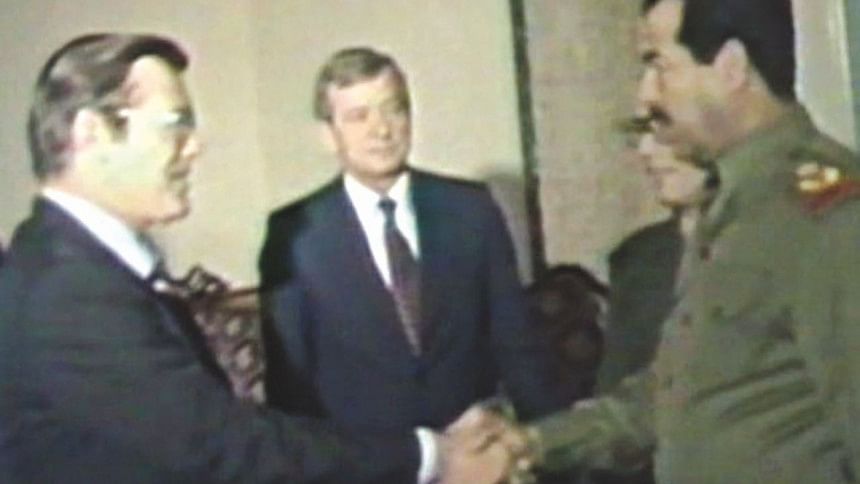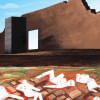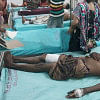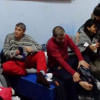A war for oil #3: When the friend turns a foe

Saddam Hussein, the man that America projected before the Iraq invasion as the most dangerous man to be dislodged at any cost, was held in close embrace by the US administration during the Iran-Iraq war in the 1980s.
Saddam's story of becoming a foe from a friend is interesting and yet another eye-opener on how the US treats regimes not on value judgment but on the basis of who serves US hegemony and oil interest best in the Middle East.
Saddam was picked by the CIA in 1959 to assassinate then Iraqi prime minister Abd el-Karim Qasim, a nationalist leader who promised to renegotiate oil production terms with the US oil companies.
Qasim had overthrown the Iraqi monarchy of King Faisal in 1958. He actually was originally regarded as a close ally by the US in the cold war game who joined the anti-Soviet Baghdad Pact in the mid-1959s. But Qasim also maintained a close tie with leftwing Arab leader Egypt's president Gamal Abdel Nasser. The US made its displeasure at this two timing clear by sending 14,000 soldiers to Lebanon. Qasim got the message and cut off his tie with Nasser but then dug his own grave when he inexplicably pulled out of the Baghdad Pact and became close to the Soviets, making Iraq "...the most dangerous spot in the world..." in the eye of the CIA director Allen Dulles.
CIA sent Saddam to kill Qasim. But the attempt ended in a debacle as Saddam opened fire too soon on Qasim's car. A grenade thrown by one of his six commandos did not explode. Saddam had to flee to Tikrit, his home town, with the help of the CIA and Egyptian agents from where he slipped into Cairo. Here he lived in comfortable arrangements by the CIA and Egyptian security service.
But then in 1963, Qasim was killed in a coup of the Ba'ath party that enjoyed CIA's confidence. Saddam returned to Iraq and became the head of the secret intelligence apparatus to oversee the liquidation of communists in Iraq.
Saddam, still supported by the US, came to the threshold of power in 1968 as there was another coup in the Ba'ath party.
But soon the young dictator fell out of favour of the US as he started hobnobbing with the Soviets and himself appeared as a nationalist leader. His nationalisation of Iraqi oil in 1972 was a shock for the US. The US government soon leaned towards Iran under Mohammad Reza Shah. The Shah soon became the closest ally of the US in the Gulf.
The drama changed scene again when Ayatollah Khomeini seized power by ousting the Shah. The Islamic Republic of Iran became a foe of America.
It was then the US thought to befriend Saddam again and use him against Iran because an Islamist Ayatollah was a threat to both the US and Israel.
Documents from April 1981 declassified under the Freedom of Information Act and compiled by the National Security Archive show that the US finds "...a greater convergence of interests with Iraq than any time since the revolution of 1958..." because of the common enemy Ayatollah.
The declassified documents reveal the US provided intelligence and satellite imagery to Saddam in his fight against Iran and also turned a blind eye to Saddam's use of chemical weapons including mustard and sarin gas against Iran and Kurds.
Not only that. As protests raged in US about Iraq's use of chemical weapons, US president Ronald Reagan's then special Middle East envoy Donald H Rumsfeld who later became one of the main architects of Iraq invasion visited Baghdad in March 1984 with instructions to deliver a private message to Saddam. Declassified documents obtained by the National Security Archive in 2003 reveals that Rumsfeld was supposed to assure that public criticism of Iraq in US for using chemical weapons would not derail Washington's attempts to forge a better tie with Iraq.
At the height of this cooperation, Iran had found a gaping hole in the Iraqi defence in the winter of 1987 and prepared for a massive attack in spring of 1988 that would have surely gained it Basra.
But the US provided Saddam its intelligence and images of Iranian troop movement that revealed Iran's strategic goal. Saddam then launched a counteroffensive with mustard and sarin gas in early 1988 relying on US satellite intelligence.
Iran suffered badly and finally agreed to negotiate with Iraq.
Throughout the Iran-Iraq war, the US had firm evidence of Iraqi chemical attacks beginning from 1983, as the Foreign Policy magazine revealed. But it never supplied the evidence to Iran to get any resolution in the UN.
Declassified CIA documents now show senior US officials were being regularly informed about the scale of the nerve gas attacks. The US also knew the exact location of the chemical plants.
The US action was rationalised in the National Security Archive documents as "...the US, having decided that an Iranian victory would not serve its interests, began supporting Iraq." Measures were also taken to support Iraq such as removing Iraq from the US list of states supporting international terrorism in February 1982.
Iraq was now at a stage of pauperisation because of its long war with Iran and loans were provided to Iraq to pursue its war mission. The NSA says: "The White House and State Department pressured the Export-Import Bank to provide Iraq with financing, to enhance its credit standing and enable it to obtain loans from other international financial institutions. The U.S. Agriculture Department provided taxpayer-guaranteed loans for purchases of American commodities, to the satisfaction of U.S. grain exporters."
As the war ended, Iraq found its economy completely destroyed. Its oil fields were yielding little output as investments fell and at the same time the world oil market was in a glut, causing a drop in oil price.
Meanwhile, Kuwait became a thorn in the side of Iraq. Saddam suspected Kuwait was using slant drilling to steal oil out of Iraqi fields. Moreover, Iraq still considered Kuwait as part of its own territory separated in 1922 by the British.
With his war machines ready, Saddam met US ambassador April Glaspie in July, 1990 to discuss his ambition. The ambassador made a vague comment that the US was not interested in regional border disputes although she made it clear that America is concerned by Saddam's troop mobilisation. Saddam took her comment as a consent to invade Kuwait which it did just a month later.
But Kuwaiti oil was "America's". During the US-British negotiations over control of Middle Eastern oil, as the Second World War was winding up in 1944, President Roosevelt told the British ambassador in Washington: "Persian oil is yours. We share the oil of Iraq and Kuwait. As for Saudi Arabian oil, it's ours."
So when Iraq invaded Kuwait for oil, Saddam automatically became a foe of the US. George Bush, backed by British prime minister Margaret Thatcher, imposed sanctions and mobilised an international coalition to oppose Iraq. Half a million US troops flew into Saudi Arabia in November 1990 and finally in January 1991, the US started its attack codenamed Operation Desert Storm.
Since then Saddam could no more gain the friendship of the US. US policy made sure that it controlled the whole of Gulf oil by itself, and so in a way Saddam's fate was sealed. After the September 11, 2001 Twin Tower attack in New York, the Bush administration set out to dislodge Saddam as soon as possible and soon, the fable of Saddam's Weapons of Mass Destruction was invented.

 For all latest news, follow The Daily Star's Google News channel.
For all latest news, follow The Daily Star's Google News channel. 








Comments